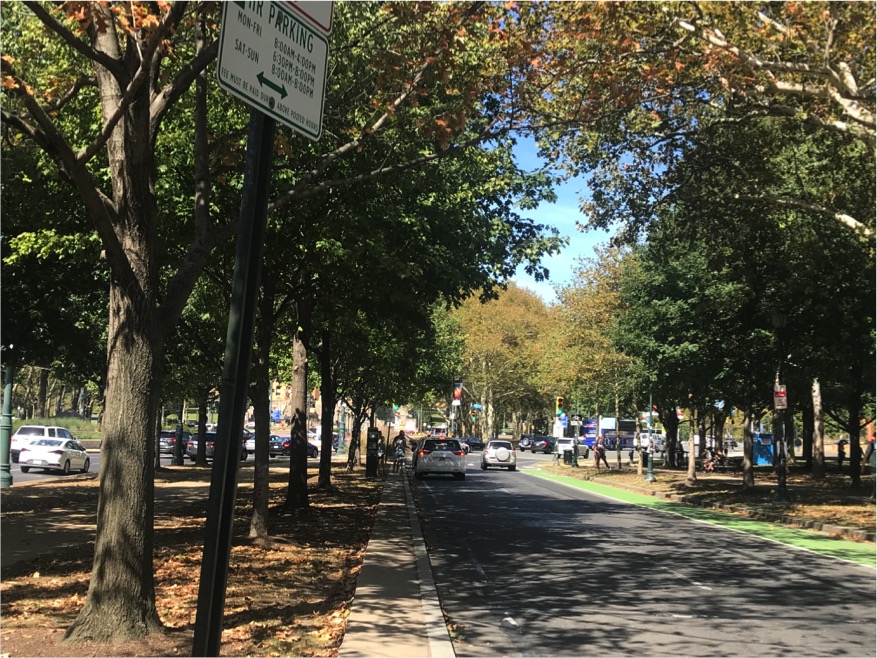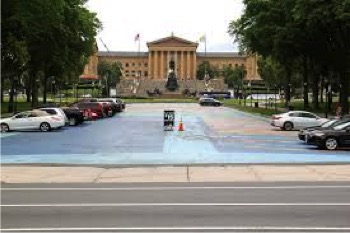Ray Grenald has visions. That’s how his mind works. A lighting architect, he dreamed of creating a dynamic image for Philadelphia. So he had the idea of putting lights on Boathouse Row. He got that done in 1979, thus transforming the 19th century boathouses into the most photographed sight in the city.
Grenald has long had another vision. This one is for Eakins Oval and the Art Museum. He told me about it more than a year ago, but now that the City is rethinking this once gracious space which has become dangerously high-trafficked, I’d like to put it out there.
Grenald knows it’s a long shot but he’s convinced his idea would give Philadelphia an iconic landmark akin to what the Lincoln Memorial is to Washington D.C.
“We’re missing an opportunity for grandeur along the [Benjamin Franklin] Parkway, from City Hall to the Art Museum,” he said.
Grenald, who has put his arguments into a letter he will send to anyone who might listen, writes that his idea would return the Parkway to its 1917 concept as “a Grand Baroque avenue… with the Art Museum –the visual terminus–at the west end.” That plan, he explains, was overtaken in the 1950s by traffic and a high accident rate. As a remedy, the outer Parkway lanes were created and multitudes of trees planted, “eliminating the vista that had been created.”
Today, that “grand vista” of the Art Museum can no longer be seen from the Parkway’s outer lanes until you’re practically in front of it.

And that’s just one problem.
The other is Eakins Oval itself and its relationship to the Art Museum. The Oval is a large, paved space that’s typically empty – a dead traffic island. Sometimes, it’s used for parking. In the summer, the city has tried to give it purpose by allowing food trucks and a temporary sandbox that attract families on sultry evenings.
Towering above the Oval just opposite the museum is the large equestrian statue of George Washington flanked by two small fountains. The ensemble, Grenald says, does nothing to enhance the stature of the Art Museum which is now “kind of lost.” Also, he says, it “has no setting. It’s just up on a hill. How do you anchor it to the Parkway? Add glittler, sparkle, brightness” – with a reflecting pool.
Imagine, he says, a large circular reflecting pool, flooded by water about four inches deep–at times, still like a mirror, at others ruffled by wind. In winter, it could be a skating rink. A reflecting pool, he says, would “draw more attention to the majesty of the museum.”
Then, he continues, imagine the stairway up to the Art Museum with water cascading down the middle section, still leaving plenty of room on each side to run the “Rocky steps.”


Grenald sees striking similarities between the Art Museum and the Lincoln Memorial. “Each building is an excellent example of Neoclassic Architecture. Each is located at the top of a monumental classic stairway which terminates the planned Baroque vista.”
But unlike Washington, he says, “We don’t have a major public space like the Lincoln Memorial” with its long reflecting pool and view toward the obelisk that is the Washington Monument. Instead, we have Independence Mall, which feels like it is “of a Colonial scale.”
For big public events, such as Welcome America, the reflecting pool could be drained, he said. Or covered over. Under the Oval, room could be made for parking, rest rooms, and maybe a medical station. As for the trees, which now obscure the grand view of the museum, they are aging and could be rethought.
Grenald faced opposition when he proposed lighting Boathouse Row in 1977, with many arguing that the 19th century boathouses should remain just as they were. But Mayor Frank Rizzo loved the idea. And it came to pass.
Will Grenald find a champion for this vision? In recent years, the city has polled some of the 70,000 people who live near the Parkway for ideas. The resulting 2013 report, “More Park, Less Way,” has led to efforts to reduce traffic, at least in summer, and find ways to give neighbors more access to parkland and programming. Now, armed with a $495,000 planning grant from the William Penn Foundation, it hopes to that next summer it will seek bids for a more comprehensive design for the Parkway. Maybe Grenald’s idea will make it into the mix. Philadelphia Inquirer architect Inga Saffron wrote this summary of where the reimagining stands.
In the meantime, ever the dreamer, Grenald tossed out another idea, this one for Boathouse Row: Install lighting on the trees along Kelly Drive, focused on the currently dark backsides of the boathouses facing the drive. “It would give the houses more of a presence from Kelly Drive. The lighting should be subtle, a blue-white light evocative of moonlight….